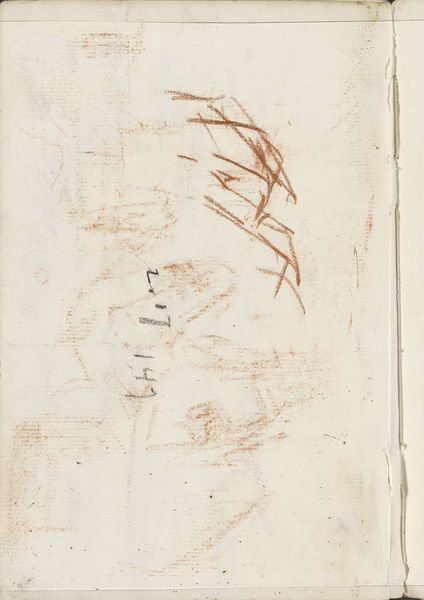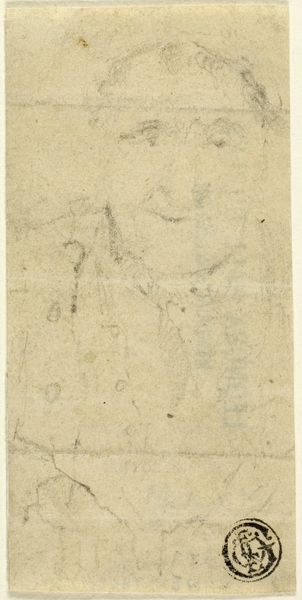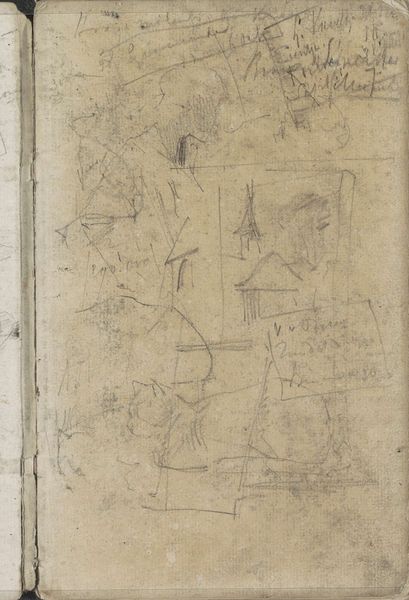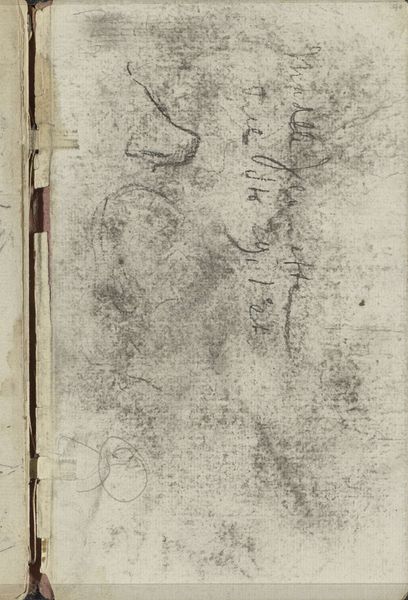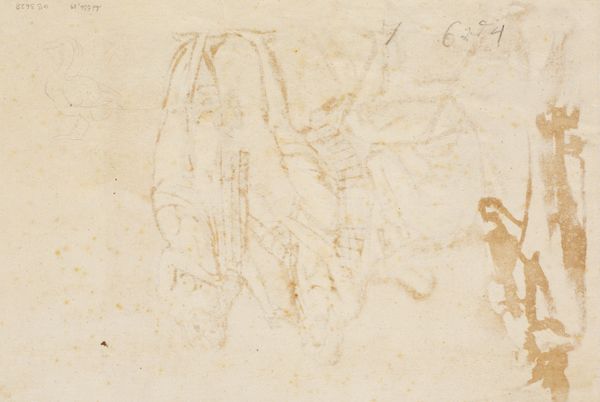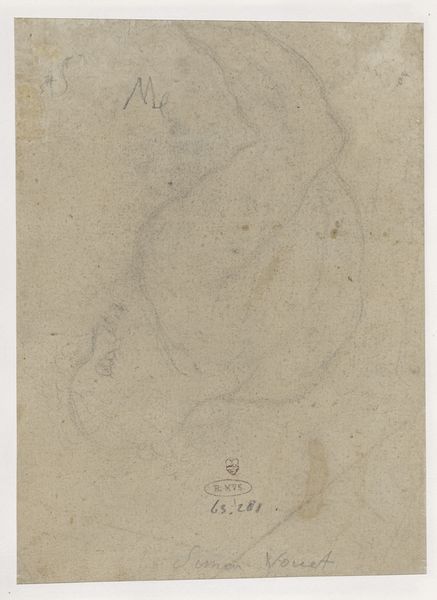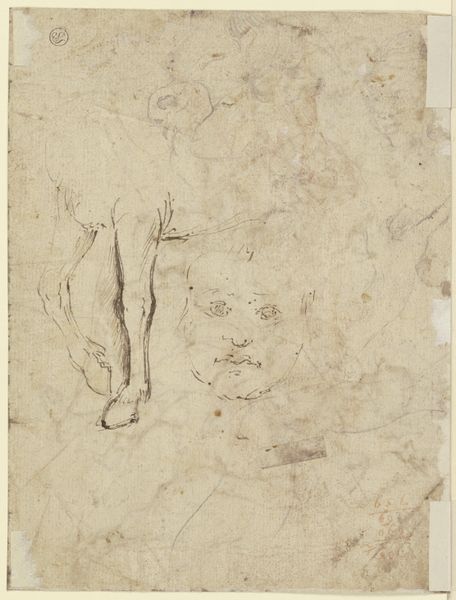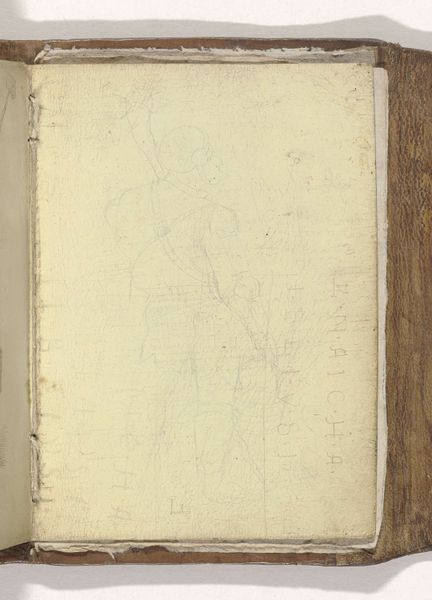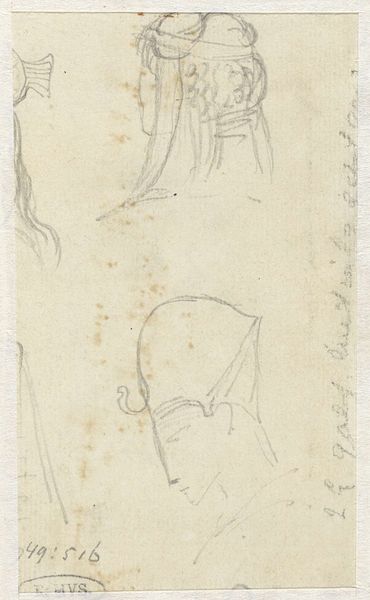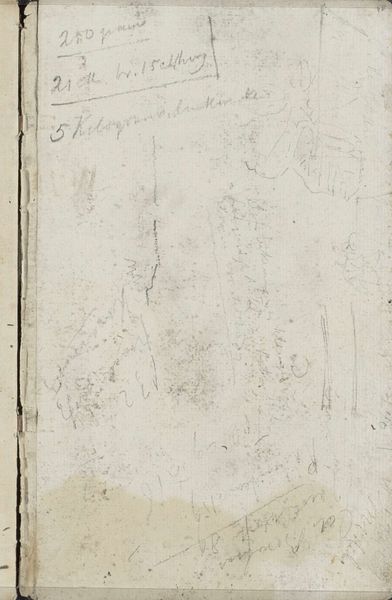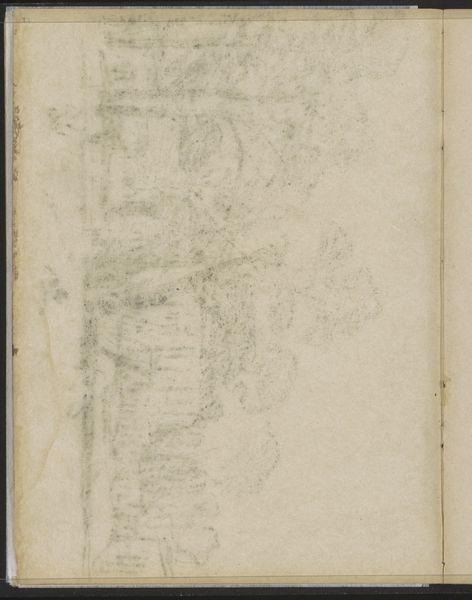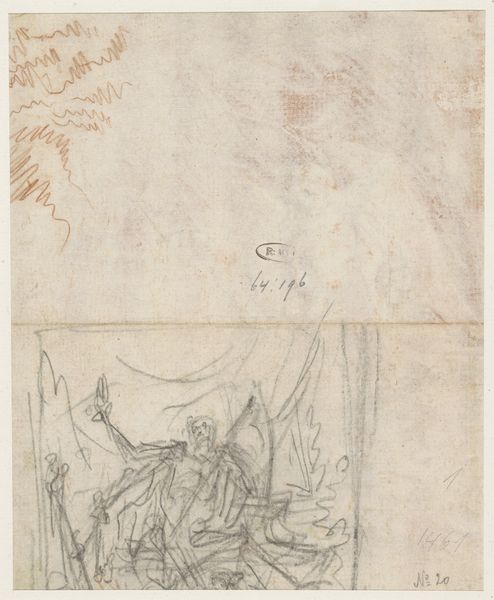
drawing, coloured-pencil
#
drawing
#
coloured-pencil
#
11_renaissance
#
coloured pencil
Dimensions: 417 mm (height) x 262 mm (width) (bladmaal)
Editor: So, this is "Two Studies for a Portrait of a Woman" by Giambattista Moroni, created sometime between 1540 and 1578. It’s a drawing using coloured pencils, and there’s something really ghostly about the image—the way the lines just barely suggest the figure. What do you see in this piece? Curator: Well, I see a document of its time, pregnant with the restrictions placed upon women’s representation. Note how this is just a sketch, a "study." It raises questions about the male gaze, doesn’t it? We must consider Moroni's societal position, his potential biases. Was this woman ever given agency in her own portrayal? Was she allowed to subvert those established systems of patriarchal dominance that she was necessarily a part of? Editor: That's fascinating. So you're suggesting that even in this preliminary sketch, we can see power dynamics at play? Curator: Precisely. The very act of portrayal, especially during the Renaissance, reinforced societal hierarchies. Her representation, even in its fragmented form, existed within a system designed to control and categorize women. How do we interpret this piece through the lens of feminist art history? Editor: It definitely gives me a different perspective. I was focused on the visual aspect but hadn’t considered the historical power dynamics. Curator: Exactly, situating this sketch within the broader context of gender politics allows us to critically examine the artist's intent and the viewer’s reception. Can we interpret these strokes, these lines, as tools that solidify this patriarchal power? Are they a language spoken between men in which the subjugation of the women that were an intimate part of their lives were not just considered proper but absolutely required? Editor: It makes you wonder about the sitter's own story, which is largely erased here. Curator: Precisely, the very elusiveness speaks volumes. What does this sketch tell us about the artist's agency over his subject's identity? Editor: Thanks for shedding light on that. I'll definitely look at art from this period differently now. Curator: Likewise. These dialogues, between the work and its historical context, help reveal the intricacies of power, representation, and the ongoing struggle for self-definition, wouldn't you agree?
Comments
No comments
Be the first to comment and join the conversation on the ultimate creative platform.
